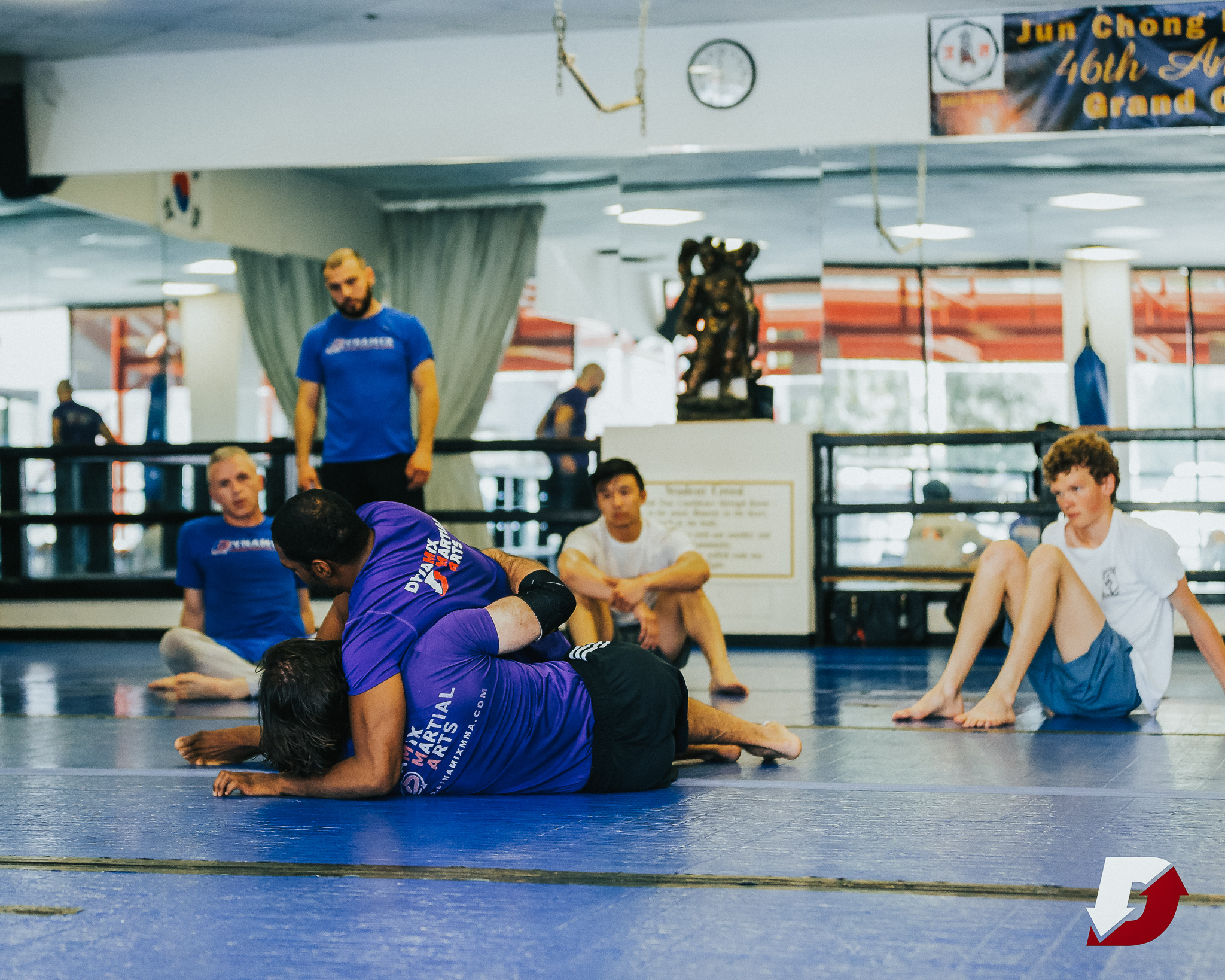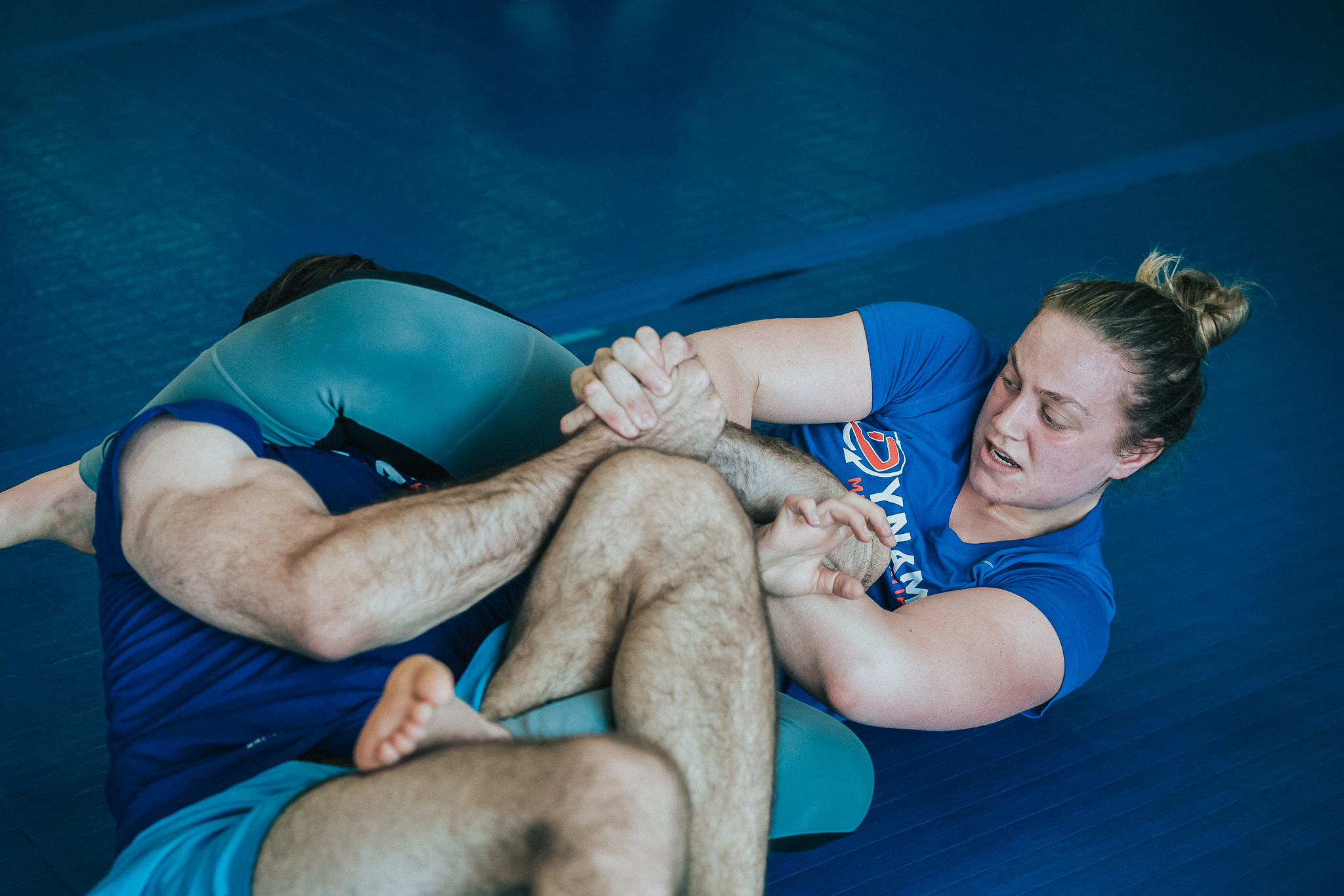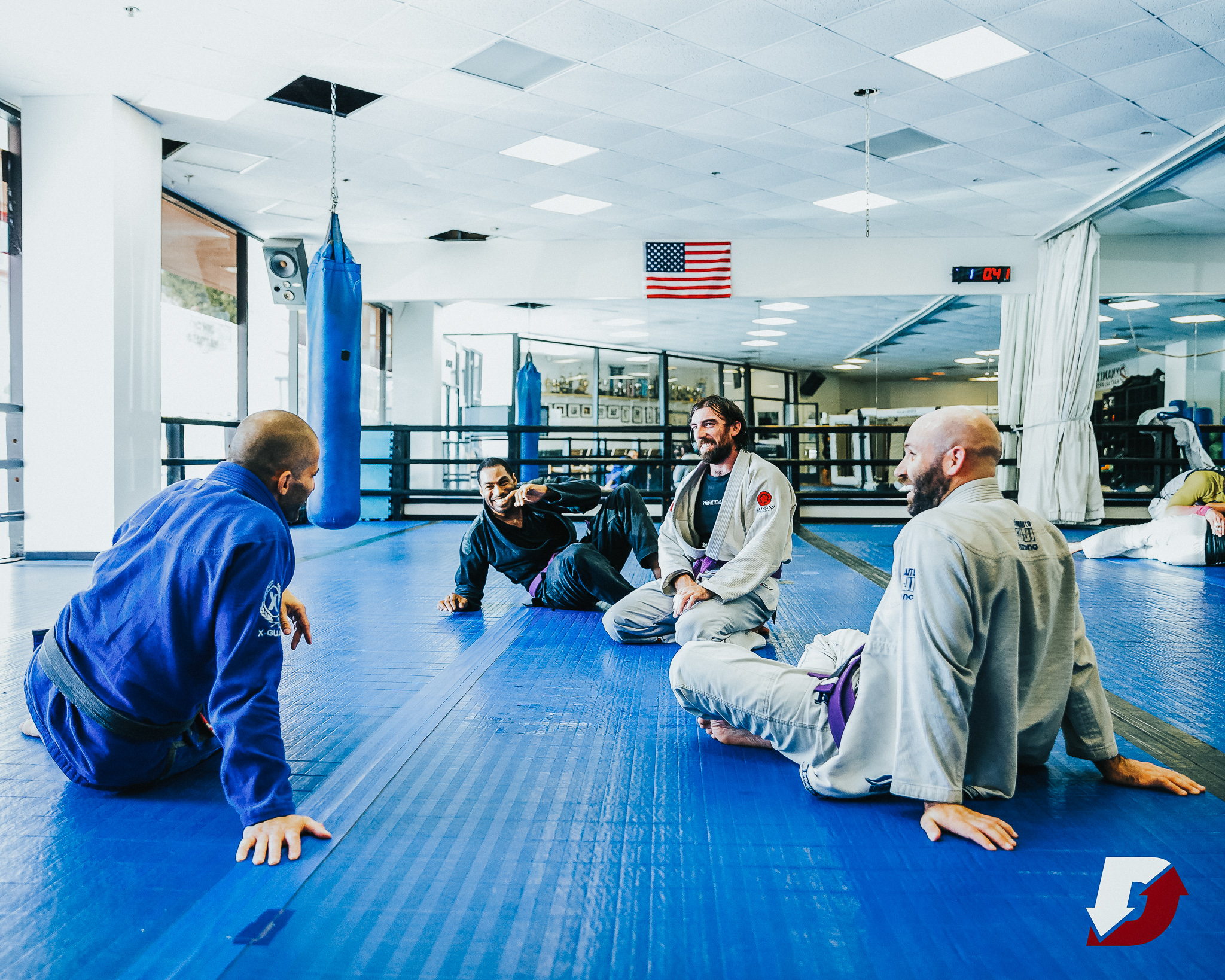Class details
Brazilian Jiu-Jitsu (BJJ) is a grappling art, a self-defense system, and a component of Mixed Martial Arts (MMA). Originating in Japan, Jiu-Jitsu served as the unarmed combat system for the Samurai, and later evolved into Kodokan Judo (also known as Kano Jiu-Jitsu) under founder Kano Jigoro in the 1880’s. Kano’s top student, Mitsuyo Maeda was responsible for bringing Jiu-Jitsu to Brazil in 1914 and introducing it to the Gracie family. Helio Gracie was the founder of the Brazilian style of Jiu-Jitsu, which is today the most widely practiced form. A naturally small and frail man (5’8”, 140lbs), Helio was responsible for modifying the techniques taught to him by Maeda into a system that relied less on physicality, and thus enabling a smaller person to defeat a bigger, stronger opponent by using leverage and technique.
Helio Gracie’s son, Rickson Gracie, is widely regarded to be the best BJJ practitioner of all time, as well as one of the first MMA fighters, with an undefeated record in his twenty-year career spanning from 1980-2000. During his time as an active competitor and instructor in West LA, Rickson promoted an elite group of his students to Black Belt. One of the few American’s to receive this honor, is Henry Akins, former head instructor at Dynamix.
Today, modern BJJ exists not only as a self-defense system, but also as a sport, in addition to being an essential component to MMA. The UFC was designed in 1993 specifically to test the efficacy of all the martial arts when pitted against one another, and it was BJJ that dominated the early tournament-style fights. Jiu-Jitsu is a complete workout that combines cardiovascular and muscular endurance training with movements that incorporate functional strength and balance. Best of all are the cognitive benefits that come accompany BJJ training. Henry Akins describes the strategic and competitive aspect of BJJ as “full-contact chess.” In addition to getting in shape and learning how to defend themselves, students of BJJ learn confidence and discipline while training in fun, family environment. Dynamix offers both Gi and No Gi Jiu-Jitsu classes.
Gi Jiu-Jitsu
Traditionally, Jiu-Jitsu is practiced in the Gi or Kimono, similar to the judogi used in Judo. Training in the gi is often beneficial for beginners, as the friction and grips created by it’s fabric creates a slower pace and fewer scrambles when transitioning between positions.
No Gi Jiu-Jitsu
No Gi Jiu-Jitsu is a modern variation of traditional Jiu-Jitsu that’s trained without the gi. Because of its faster pace and greater number of transitions, No Gi Jiu-Jitsu is commonly used in preparation for grappling in MMA.




